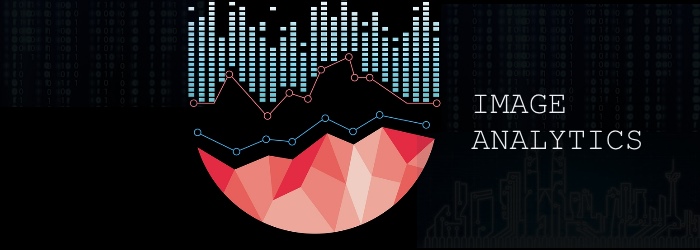Why Image Analytics Holds the Key to Better Big Data Analysis

In the 2012 Hollywood movie “Act of Valor”, US Navy Seals launch a Raven UAV to procure live video streaming for identifying targets prior to a raid. In yet another movie, “Zero Dark Thirty”, analysts use FMV/ drone feed to re-create Bin Laden’s compound for training US Navy Seals, and later guide them to accomplish their mission. The growing use of image analytics in tracking, detecting, analyzing and predicting outcomes have been effectively used by story writers to piece amazing stories. This blog analyzes the role of image analytics in enhancing the preciseness of predictive technology like big data.
How Image Analytics Helps
Image analytics is a technique by which an image is digitally processed for extracting and analyzing data for insightful information. Big data still remains a scary and invincible concept, because of the unmanageable amount of unstructured data present in it. Images and videos constitute 80 percent of this unstructured big data, and given its leaping pervasiveness, time has come for analytical systems to integrate and interpret images and videos as well as they interpret structured data.
Let’s take the example of fingerprint matching to understand how image analytics can standardize data. Fingers and their images come in different size and quality, thus making them wholly unstructured and hence, difficult to match. To structure it, agencies first identify a set of critical points on each print and use it to create a standard polygon. The polygon is fully structured and is created from a completely unstructured image. The actual analysis is now carried out with the help of these structured polygons. In a similar fashion, image analytics can be used to standardize the unstructured data which comes in the form of images and video.
The Growing Importance of Image Analytics
A recent news item on cancer detection shows how healthcare can serve as a perfect domain for exploring the potential of image analytics. In the US, until about 15 years back, the majority of breast cancer patients didn’t require chemotherapy treatment, yet all were made to undergo it because doctors were unable to distinguish aggressive cancer from non-aggressive ones. This led to serious side effects in patients afflicted with mild cancer. Soon, a genomic test was developed, in which a biopsy sample is sent to a company for analysis and assignment of a risk score, based on which doctors determine the treatment dosage. The test, however, has severe drawbacks — it requires shipping, destroys tissue, and is expensive.
Today, the need for this test stands obviated, as analysts can mine radiologic data from MRIs to discover differences in gene expression of afflicted patients and determine quantitatively which patients need chemotherapy. The benefits: no shipping, no waiting period, and cost-effective treatment. Prior to this, researchers from the University of Michigan used computed image analytics of CT scans to identify actual cases of COPD, an obstructive lung disease which leads to serious shortness of breath. In both these cases, image analytics was used to link multiple image banks with massive repository of images for an exhaustive comparative study.
For reasons obvious enough, the defense sector has been one of the early adapters of image analytics. By analyzing images sent from predator drones and satellites, it’s now possible to identify an object, its model, size, shape, location and context and interpret threat perceptions with accuracy. This is precisely why the defense industry hogs the lion’s share of the total storage capacity procured by government every year. The Air force, Navy and Army, together account for nearly 60 percent of all federal spending for storage.
Image analytics can help financial institutions find a solution to some of the operational bottlenecks that severely impact service delivery. Insurance companies, for instance, have substantial amounts of data in the form of vehicle images, x-rays and scans, which are seldom used for streamlining services. Likewise, banks have tons of data in the form of customer photographs, id proofs, and video surveillance which by and large remain unused. By using image analytics financial institutions can tap into these assets and make operations easy and secure.
Provident Bank, TD Bank, and Bank of America, for instance, offer `remote deposit capture’, to help customers deposit checks electronically using mobile devices / scanners. The data from the check image is extracted and processed, thus helping customers to save on time considerably. The Union Savings Bank depends heavily on new facial recognition technology and image analytics to reduce the time taken to carry out investigations, by identifying a given face across all videos and images.
Connecticut-based bank A Danbury uses image analytics, to identify rogue individuals and protect sensitive information. Now this technology is being experimented for enhancing services by instantly recognizing a customer, no sooner than the customer enters a bank.
Other industries are already exploring alternatives to use video and image analytics to their advantage. For instance, advertising agencies are using image analytics to read customer trajectories and place advertisements accordingly. The technology is also being used by some companies to understand which ad videos or images are having a decisive impact on its customers.
Facebook can now identify and map 98% of its images correctly, to the right person. Such image-based fake-identification can go a long way to fool proof risk-modelling of banks. The mining and oil and gas industry is leveraging image analytics to analyze video and image feeds during deep sea and land drilling and tailor strategies to overcome the obstacles. Many more projects involving imaging analytics, are being experimented in labs, and soon organizations cutting across sectors can put this technology to diverse use.
Once the data extraction from images is complete, analysts are left with a set of fully structured data, much smaller and streamlined than what they had in the beginning. This makes it easier to feed the information into analytic processes and tools and look forward to outcomes that are far more concrete, consistent and conclusive.
